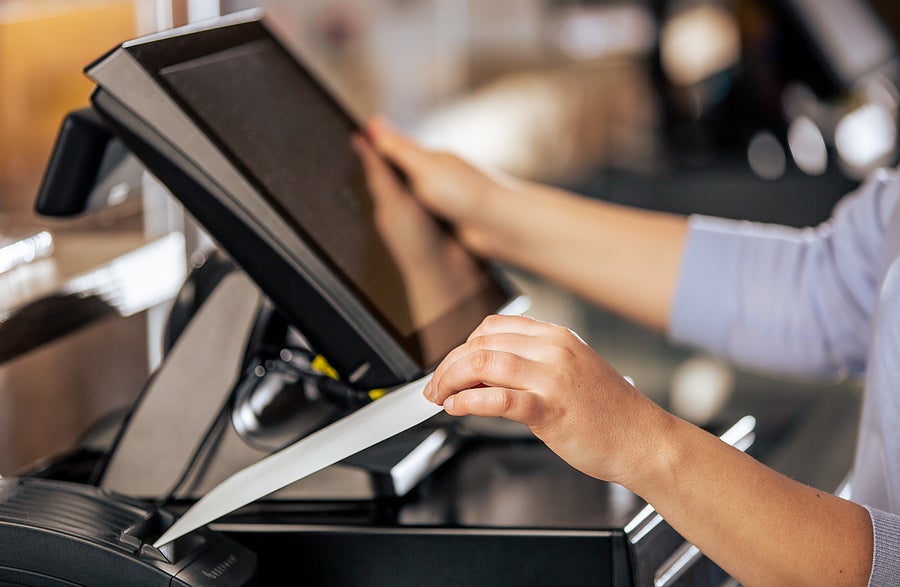
It’s easy to get caught up in the mental whirlwind of running a business daily and fail to take a step back and assess how well your company is doing financially. That’s when on-demand apps that automate expense management and receipt tracking can save the day.
By investing in on-demand app development, you will be able to keep tabs on your company’s expenditures, take stock, and conduct a thorough analysis of your finances.
With on-demand apps delivered by a reliable SaaS development company, bookkeeping is much more accurate. You will easily know when your business breaks even and you will not be losing any more money. Additionally, you will figure out the quick ratio, which is the percentage of your total debt that can be paid with cash or quickly convertible assets. Finally, you will uncover the latest trends and make more accurate predictions.
Let’s go over some helpful tips for keeping tabs on your company’s outgoings:
1. Digitize your receipts with a receipt scanner
When it comes to completing your taxes, sitting at your kitchen table in front of a pile of crumpled receipts might be stressful. You may know this from personal experience.
The main challenges that come with physical receipts are:
- It is not always easy to determine which receipt refers to which spending, particularly if you have made personal and business purchases using the same receipt.
- Additionally, the ink on receipts fades as time passes, making it more difficult to understand the information printed on them.
- Recording and filing your receipts digitally as you do your business will save you a lot of time and hassle. Make it a habit you instantly take a picture of the receipt using a receipt scanner as soon as you purchase your company. It will ensure that the purchase is correctly accounted for.
- Because a receipt is required to write something off as a legitimate business expense, you must hold on to every one of your receipts.
- Finally, if you are subject to an audit, the auditors will ask to see receipts for each item you claimed, and it will make things simpler for everyone involved if you have a clear digital record to point to.
2. Open Business Financial Accounts
Having a separate bank account for your company makes it easier to account for expenses.
Besides, it would be a sound idea to keep a separate credit card for your company’s expenditures.
If you have more than one credit card, designate one of them exclusively for use while making purchases related to your company. This way, you’ll never have to separate work and personal spending from the same receipt, which can be a pain in the neck and make you more likely to put off categorizing your expenses until a later time.
3. Use software to categorize and keep your expenses all in one place
Using accounting software, you can categorize your transactions and expenses if you keep your books on the computer. Having accounting software lets you know the ins and outs of your company finances which can enable you to make better financial decisions.
After you have determined how the item should be classified, the next step is to ensure that you have included any appropriate sales tax (if your company is registered to collect and reclaim sales tax) and any notes about the transaction.
You would record the cost of taking a customer out to lunch as an expense for Meals & Entertainment, and you would utilize the notes field to note the purpose of the lunch and the people who attended it.
If you are required to keep records of business usage of your house or vehicle, be sure you don’t forget to do so.
4. Store Receipts Properly
When selling or buying something, you either hand over or take a receipt for the transaction; after purchasing at your store, customers are given receipts to thank them for their purchase.
Keeping your key financial paperwork in order and reducing the anxiety and worry associated with tax preparation are benefits of organizing your receipts. Keeping track of receipts will facilitate an easier auditing process and ensure that your accounting accounts are always accurate.
Below we’ve listed out some of the most useful ways to store your business receipts.
- Digital Receipts
If you want to eliminate paper receipts, consider converting to a digital system. You can use software or save scanned receipts on your computer to electronically store them. Remember to back up your digital receipts to avoid losing vital financial information. Examine the many methods for digitally storing receipts listed below.
- Software
Expense management software, often known as receipt management software, allows you to upload, record, and track business expenses.
Most systems allow you to organize your receipts and access functionalities that paper storage does not provide. You might be able to put reminders in your software to upload and organize receipts, for example.
- Digital Folders
Receipts can also be saved in digital folders by business owners. Scanners can be used to transmit receipts from paper to electronic devices such as a computer, smartphones, or tablets.
You can take images of your receipts if you don’t want to pay for software or a scanner. Then, manually transfer them to your computer for storage and management.
5. Review and categorize your business expenses regularly
If you are a company owner, establish a routine for checking your expenditures regularly to ensure that your transactions are sorted into the appropriate categories and that the information you report remains accurate.
If your business expenses are itemized and kept up to date, you can monitor the status of your company’s finances at any point during the year.
You will be able to monitor exactly how much money you are spending, determine whether or not you are making a profit, and make any required adjustments to your strategy as you go along.
Receipt-tracking Apps for Business Owners
As a small business owner, you should handle receipts and cost reports in a timely and organized manner. These have an impact not just on your balance sheet but also on other responsibilities, such as your annual taxes.
The right receipt software will prevent you from misplacing your receipts and spare you the hassle of searching through a mountain of paper receipts when it is time to file your taxes.
Following is a rundown of the best receipt-tracking tool, as determined by our study of the topic.
- Expensify
With Expensify, you can easily keep track of your receipts, and manage business expenses and spending while you’re on the road. Taking a picture of your receipt is all that’s required for Expensify to transcribe the information for you automatically. Expenses can be categorized and coded with Expensify, and the software can automatically submit receipts for approval and reimbursement of business expenses.
Features:
- Access Controls/Permissions
- Activity Tracking
- Small business receipt app
- Approval Process Control
- Audit Trail
- Billing & Invoicing
- Expense Tracking
- Mobile Receipt Upload
- AutoEntry
Ratings:
G2: 4.3/5
Capterra: 4.4/5
- AutoEntry
To streamline your bookkeeping tasks and free up time, eliminate manual data entry. AutoEntry possesses integration capabilities for numerous accounting programs, including Quickbooks, Xero, Sage, Kashflow, Fuzemetrix, and others.
Features:
- Data Capture and Transfer
- Data Quality Control
- Data Replication
- Data Retrieval
- Image Capture
- Mis-Keyed Variation Detection
Ratings:
G2: 3.7/5
Capterra: 4.5/5
- Shoeboxed
The simplest method for your company to keep track of spending is Shoeboxed. Use their mobile app, eReceipt uploader, or pre-paid mail-in envelopes to submit receipts. After scanning, entering data, and categorizing everything, Shoeboxed uploads it to an IRS-approved, secure online account that is searchable.
Converting real paper into digital data aids small firms and entrepreneurs in becoming organized and maximizing tax deductions. Their goal is to simplify time-consuming accounting and administrative procedures, so business owners may spend more time doing what they enjoy and less time on paperwork.
Features:
- Expense Tracking
- Multi-Currency
- Optical Character Recognition
- Reimbursement Management
- Tax Management
Ratings:
G2: 4.4/5
Capterra: 4.4/5
- Rydoo
The process of managing expenses may be reduced to a few clicks and images thanks to Rydoo, which provides real-time approval flows, receipt-tracking apps, and intelligent reporting. In addition to doing away with the need for expense reports as we know them now, Rydoo also establishes a new norm for business travelers by enabling employees to rapidly plan trips using their smartphones. Capture and monitor costs in real time from any location. Make the process of submitting expenses quick and straightforward for both your employees and your finance team. More than 100,00 people have put their faith in Rydoo to expedite the expense reporting process.
Features:
- Approval Workflow
- Billing & Invoicing
- Booking Management
- Expense Tracking
- Mobile Access
Ratings:
G2: 4.4/5
Capterra: 4.4/5
- Wave Receipts
Small business receipt tracking can take advantage of Wave’s free, true double-entry accounting system. Wave is software hosted in the cloud that allows users to view their data from any location, add an unlimited number of collaborators, and work on all of their enterprises from a single login. Wave eradicates the need for manual data entry and places all of the required financial reports at your fingertips, freeing you up to spend more time doing the things you enjoy. Your invoicing, receipt scanning, payment processing, and payroll are completely integrated into your accounting system.
Features:
- Access Controls/Permissions
- Bank Reconciliation
- Billing & Invoicing
- Cash Management
- Customer Statements
- Data Import/Export
- Expense Tracking
- Fund Accounting
Ratings:
G2: 4.5/5
Capterra: 4.4/5
Conclusion
How to track expenses for small businesses? Keeping eye on the costs of running your company also makes filing your taxes much less hassle, as many business expenses are tax deductible. Maintaining an accurate record of your expenditures increases the chance you will not overlook any potential deductions. It means you will pay fewer taxes when the time comes (or get more back).
Keeping track of your day-to-day costs is much simpler when you use the best app to track receipts designed for businesses to monitor their expenditures. You must keep track of your spending since the amount of money you have will determine your day-to-day cash flow and how much opportunity for expansion your company has.
2030 Views












